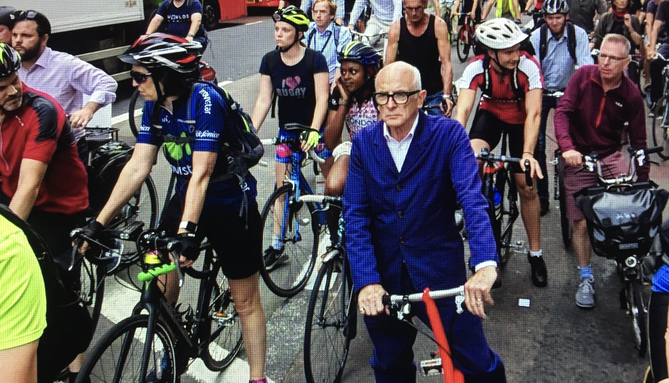|
In the 70s, Shad Thames was a dark and dismal place. The warehouses, still smelling of spices from far flung outposts of the Empire, had been made redundant by when dockers were replaced by containers and the port of London moved out to Tilbury. The derelict buildings and the iconic zig zag bridges that spanned the street were a symbol of the capital’s changing role as a post-industrial city - a shrinking metropolis reduced in size by the changing structure of business and by government policy. The Location of Offices Bureau was set up in 1963 to disperse office jobs from the centre of London to Harlow, Hemel Hempstead, Watford and beyond, encouraging the reduction in population.
In its ruinous state Shad Thames became a squat. Architecture students colonised the huge floor plates, subdividing them with high fire risk polythene partitions, huge parties were held amongst the grand cast iron columns and the solid teak floors; the artist Derek Jarman lived in a greenhouse to try and keep out the cold. Mrs Thatcher binned the LOB is the 80s and set up the Use Classes order of 1987. This gave a new lease of life to redundant warehouses and factories. The B1 business class “Offices (other than those that fall within A2), research and development of products and processes, light industry appropriate in a residential area” was just the thing that empty spaces from Butlers Wharf to Wapping, in Clerkenwell and Shoreditch needed - B1 covered design studios, architects’ offices and creative industries generally who were looking for large, cheap spaces with a bit of character. They became nurseries of talent, and locations for SMEs (who, it is often forgotten, make up some 60 per cent of private sector employment). Now the Government is changing the use classes order to permit change of use from commercial (B1a) to residential (C3) without the need for planning permission. All but three local authorities in London requested exemptions from the changes. Westminster doesn’t like the proposals because it thinks that the high price of residential property in Soho would start to squeeze out the film production cluster around Wardour Street and Dean Street. Hackney wasn’t keen because the technology, media and telecommunications (TMT) sector - ‘Tech City/Silicon Roundabout’ - will be priced out of the market as their low tech work spaces are converted to high end residential lofts. Apart from 19th century industrial buildings, according to a report by architects Child Graddon Lewis, the most likely types of commercial buildings to be appropriate for conversion are pre-1970 post-war office buildings - although these require a lot of work to comply with building regulations. It is likely that re-cladding will be necessary and with re-cladding comes the requirement for a planning application for external alterations, thus removing some of the benefits of relaxing the use class order in the first place. But whatever the short term local issues might be in Hoxton or Hackney, the idea that buildings can change to suit the demands of new generations is key to the concept of a sustainable city. Forty years ago RIBA President Alec Gordon called for buildings to be “long life, loose fit and low energy” - a call that was never more relevant than it is today.
0 Comments
Leave a Reply. |
Archives
October 2020
Categories |

 RSS Feed
RSS Feed